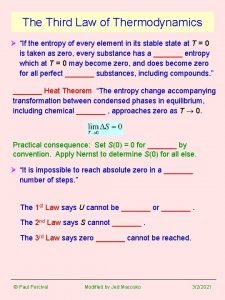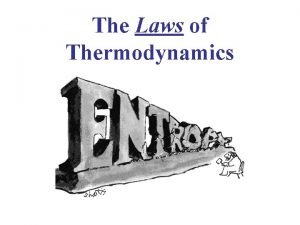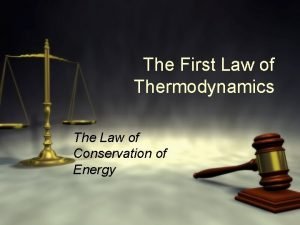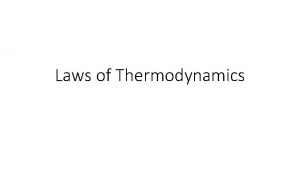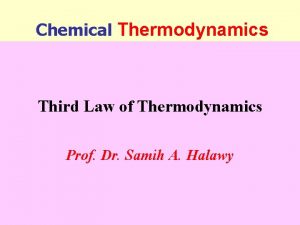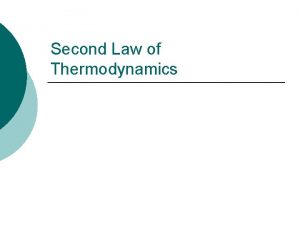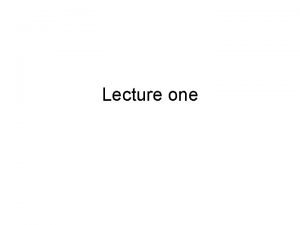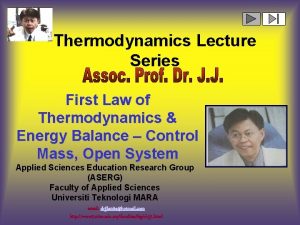The Third Law of Thermodynamics Consider the first






- Slides: 6

The Third Law of Thermodynamics Consider the first law for a reversible change at constant volume. d. U = dq + dw = dq − Pexd. V From our earlier discussion of heat capacity dq = CV d. T (CV since constant volume). So, The entropy is defined by the differential d. U = CV d. T equation but also d. U = T d. S

A very similar derivation can be done for a reversible change at constant pressure (we can not do it quite yet) to yield Statiscal statement " What is entropy ? " in physical chemistry. How does the entropy change with temperature under constant pressure ? How does the entropy change with volume at constant temperature ? The entropy will be related to " randomness " in a spatial or energy distribution of the constituent particles. The third law of thermodynamics permits the absolute measurement of entropy. To derive the mathematical statement of the third laws we starting with

Hence the mathematical statement of the third law is From a macroscopic point of view S 0 is arbitrary. However, a microscopic point of view suggests S 0 = 0 for perfect crystals of atoms or of totally symmetric molecules (e. g. , Ar, O 2 etc. ). S 0 6= 0 for imperfect crystals and crystals of asymmetric molecules (e. g. , CO). Alternative statement of the third law: Absolute zero is unattainable. Consider the heat capacity near T → 0. For S 0 to have significance CP T must be finite (not infinite) as T → 0. Thus CP → 0.

In other words, an infinitesimal amount of heat causes an infinite change in temperature. The molar entropy is

Temperature and volume dependence of entropy for a homogeneous system At constant amount of substance, equation rearranges to If the volume stays unchanged during a thermodynamic process, equation simplifies to

Temperature and pressure homogeneous system dependenceof entropy for By integrating the total differential with respect to the general prescription a


